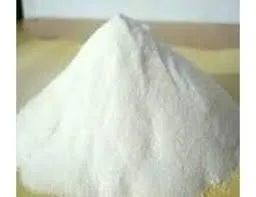
дек. . 10, 2024 18:11 Back to list
hydroxyethyl cellulose viscosity
The Importance of Hydroxyethyl Cellulose Viscosity in Various Applications
Hydroxyethyl cellulose (HEC) is a versatile polymer derived from cellulose, known for its water-soluble properties and ability to form viscous solutions. Its viscosity, which is a measure of resistance to flow, plays a crucial role in a wide range of applications, from pharmaceuticals to personal care products, and even in food and construction industries. Understanding the factors that influence the viscosity of HEC is essential for optimizing its use in various formulations.
Understanding Hydroxyethyl Cellulose
Hydroxyethyl cellulose is synthesized through the etherification of cellulose using ethylene oxide. The resulting polymer has hydroxyl groups, which enhance its hydrophilicity and enable it to dissolve easily in water. The viscosity of HEC solutions can vary significantly depending on its molecular weight, concentration, and the temperature at which it is used. Higher molecular weight HEC tends to create solutions with greater viscosity, making it suitable for applications where thickening or gelling properties are desired.
Factors Influencing Viscosity
1. Molecular Weight The molecular weight of HEC is one of the primary determinants of its viscosity. As the molecular weight increases, the viscosity of the solution also increases. This relationship is crucial in applications like thickening agents in cosmetic formulations, where a higher viscosity can lead to better product performance, such as improved application and stability.
2. Concentration The concentration of HEC in a solution directly affects its viscosity. Higher concentrations result in more significant interactions between polymer chains, leading to increased viscous behavior. This property is particularly important in industries such as construction, where HEC is often used as an additive in cement and mortar formulations to improve workability and prevent segregation.
3. Temperature Temperature changes can significantly alter the viscosity of HEC solutions. Typically, as temperature increases, viscosity decreases. This characteristic is particularly beneficial in applications where flow behavior needs to be optimized, such as when applying paints and coatings, where higher temperatures can facilitate easier application by reducing viscosity.
hydroxyethyl cellulose viscosity

4. pH Levels The pH of the solution can also impact the viscosity of HEC. While HEC is generally stable across a wide pH range, extreme pH levels may alter its thickening properties. Therefore, it is essential to consider the pH of the final product, especially in personal care and pharmaceutical formulations where skin compatibility and stability are critical.
Applications of Hydroxyethyl Cellulose Viscosity
1. Pharmaceuticals In the pharmaceutical industry, HEC is often used as a binder, thickening agent, and stabilizer in various formulations, including gels and ointments. The viscosity of HEC is crucial in ensuring that these products have the desired texture and consistency, which enhances their effectiveness and patient usability.
2. Personal Care Products HEC is widely employed in cosmetic formulations such as shampoos, conditioners, and lotions. The viscosity contributes to the desired product feel, stability, and performance. For instance, in hair styling gels, a high viscosity can help maintain the shape of styled hair, while in lotions, a medium viscosity allows for easy spreadability.
3. Food Industry In food applications, HEC serves as a thickening agent, stabilizer, and emulsifier. Its viscosity helps improve the texture of sauces, dressings, and dairy products, enhancing consumer satisfaction. Additionally, HEC is often used in gluten-free products to mimic the textural properties of gluten.
4. Construction HEC is utilized in concrete and mortar formulations to enhance workability, adhesion, and water retention. Its ability to modify viscosity helps ensure that construction materials are easier to apply and more durable once set.
Conclusion
Hydroxyethyl cellulose is a crucial ingredient in numerous industries due to its unique properties, particularly its viscosity. Understanding the factors that affect HEC viscosity allows manufacturers to tailor formulations to meet specific performance needs. As research continues and applications expand, the relevance of HEC in enhancing product quality and functionality remains evident. This versatile polymer exemplifies the intersection of science and industry, highlighting the importance of material properties in designing effective products.
-
Unlocking the Benefits of HPMC Products: A Gateway to Versatile Applications
NewsAug.07,2025
-
Tile Bonding Cellulose: The Key to Superior Adhesion and Durability
NewsAug.07,2025
-
Hydroxypropyl Methylcellulose Powder: The Versatile Component in Modern Pharmaceuticals
NewsAug.07,2025
-
Hydroxyethyl Cellulose: The Versatile Solution for Various Industries
NewsAug.07,2025
-
Hydroxyethyl Cellulose (HEC): The Versatile Polymer for Various Applications
NewsAug.07,2025
-
The Ultimate Guide to Mortar Bonding Agent
NewsAug.06,2025







